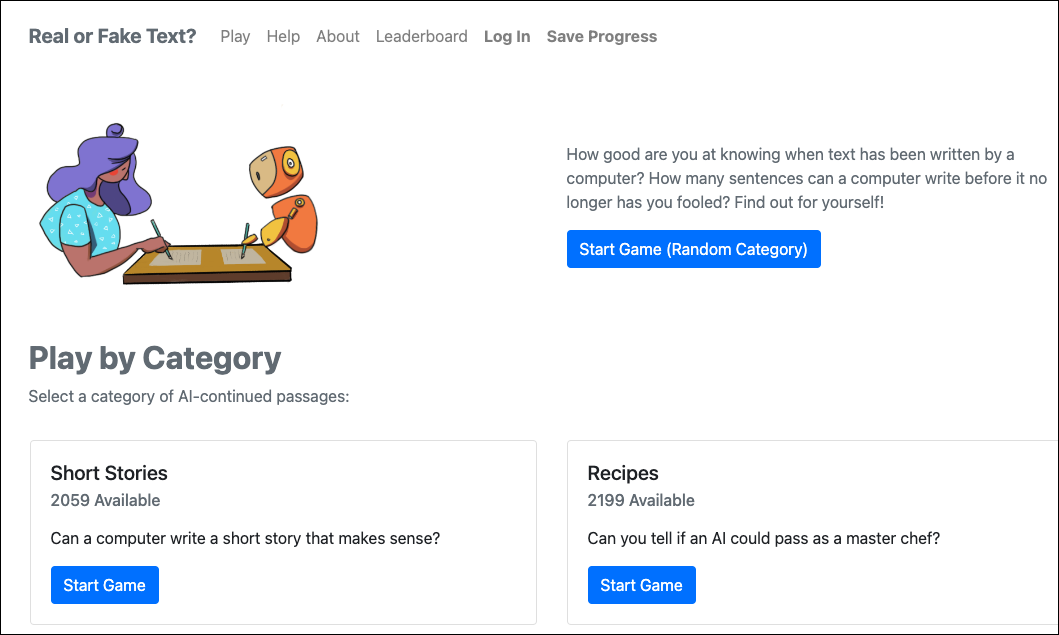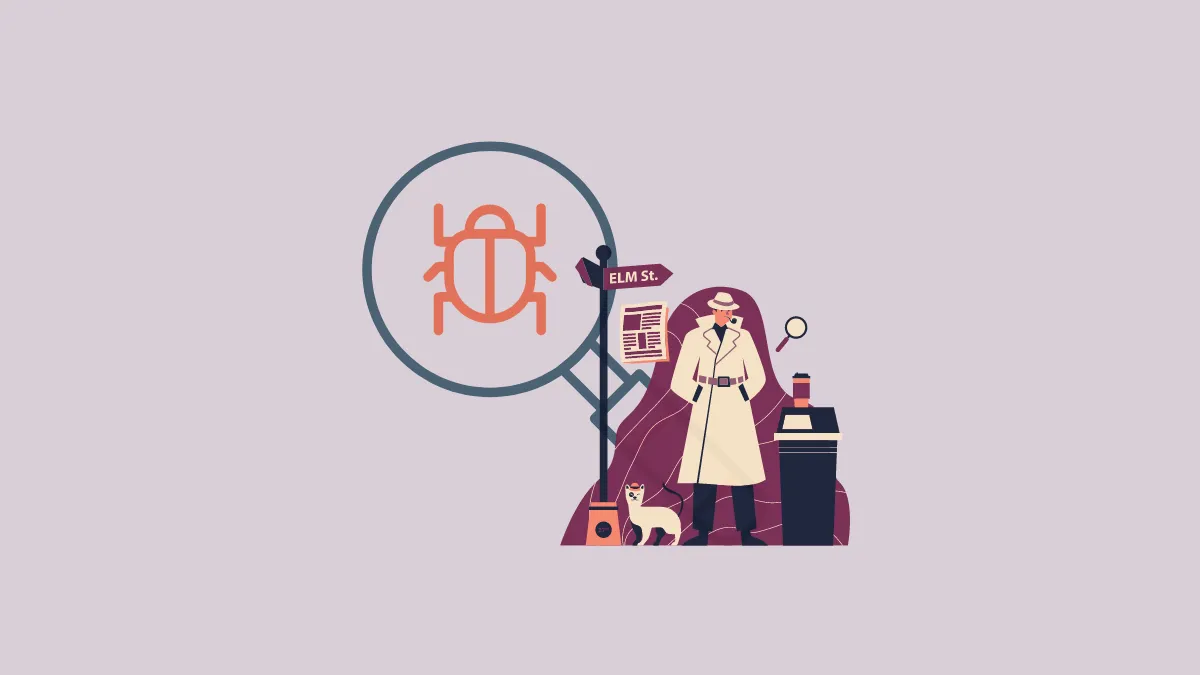Ever since the release of ChatGPT, one question that circulates most people’s minds while reading anything online is, “Was this written by a human or an AI?” ChatGPT has certainly been a trailblazer, producing diverse content that looks so human-like. But the sophistication of these models poses a question we were not anticipating facing this early in AI development.
How will we differentiate between text written by an AI from those written by humans? After all, everyone has a right to know whether they’re reading human-written content or one spewed by a machine. The morality of the question becomes an even more pressing concern in academic and political settings.
So, it goes without saying that it’s extremely important to be able to tell the origins of a piece of content if we are to prevent gross misuse of the technology. And in this guide, we’ll learn to do exactly that.
Use AI Detector Tools

One of the methods you could use to detect content written by an AI is using another AI-based tool. Some popular tools include:
- Originality.AI – This tool is better suited for professional content creators who want to make sure they don’t publish anything on their site that ends up getting flagged by Google’s algorithms for AI content detection. It is a paid tool that also offers features such as Team Management.
- GPTZero – This AI content detection tool, designed mainly for educators, uses a perplexity and burstiness score to detect content written by AI. Highly adept at its job, it can even find individual sentences in a text that were written by AI.
- HuggingFace GPT-2 Output Detector – The name might be a mouthful and suggest that the tool is outdated (cue GPT-2), but it works surprisingly well with text generated using GPT-3.5 as well.
- GLTR (Giant Language Model Test Room) – The tool detects AI-written content based on one simple tenet, text generated by AI is predictive and not random. GLTR judges each word on how likely it would be to predict it given the context to its left. If you have a text that was rather easy to predict, you have a text that AI wrote. Simple.
- Content at Scale’s AI Detector – Another reliable content detector from a generative AI tool that can help you detect AI-generated content for free.
- Writer’s AI Content Detector – Another free AI Content Detector tool that can detect content written by AI somewhat accurately. You can scan up to 1500 words at a time using the free version.
- AI Text Classifier by OpenAI – An AI content detection tool from OpenAI, the company behind ChatGPT itself. While it still needs to be developed more to provide accurate detection, it can help you detect content churned by ChatGPT.
- AI Content Detector by CopyLeaks – The plagiarism detection tool CopyLeaks also offers an AI detection tool on its website which is currently free to use while it is in the beta stage. A good tool to consider when you want to detect content by AI.
- Kazan SEO – Another free tool that offers a reliable AI detection tool along with many other features like SEO optimization, finding cluster keywords, etc.
You can find a more detailed review of each tool in our separate guide at the link below.

Are Content Detection Tools Sufficient?
Content Detection tools are alright for now, but the truth is, that they are struggling to keep up with the insane speed with which AI development is progressing. Case in point: these tools were still struggling with detecting text from GPT-3.5 models, and GPT-4 has already arrived on the scene. It’s like a race, and content detection tools seem to be losing. And not to mention the fact that most of them are notoriously easy to bypass by making sparse edits. And if you were to take text generated by one AI and paraphrase it using another, it might be impossible to detect using these tools.
Moreover, most of these tools require longer texts to function reliably. Some of them even have a minimum limit for a number of characters required to analyze. That can make it harder to spot machine writing in smaller texts, such as emails.
It’s also a fact that one content detection tool has trouble detecting content from another tool sometimes because that requires access to some information about AI models that the companies don’t provide. For example, consider OpenAI. They are developing watermarking techniques for texts developed by their models, such as GPT-3 Watermark adds an unnoticeable pattern to the text that doesn’t impact the end user in any manner, but makes it obvious to, say a content detection tool, that the text came from GPT-3. But the watermarked data will stay within OpenAI only, making it easier for their own tool only to detect data.
In short, while these tools can be helpful, they’re not foolproof. So, what alternative is there? I’m glad you asked. You need to learn to tell the signs!
Signs an AI Wrote the Content
There are some tell-tale signs that you can train yourself to look for in content written by an AI tool. Without consciously training yourself, you don’t stand much chance because that’s the danger of these tools. So, it’s time to buckle up!
The fact about these models is that they work by predicting the most likely next word in a sentence and have no actual knowledge of what they’re saying. Since it’s a prediction-based model, some patterns abound.
Fluffy pieces with repetition
Most of the content written by AI will read like a fluff piece, like someone repeating words and ideas to meet the word count. You should also scan the text for how fluently it reads; if you feel that the text does not have fluency, and certain words and phrases are being repeated, it is probably written by AI.
According to researchers, there’s often a repetition of common words, such as “the”, “it”, and “is”, etc. more than there would be in a text written by a human. Since they’re predicting the most likely word, the text ends up with such words instead of uncommon ones. But there’s also a repetition of one idea, in the same words and expressions, throughout the text. This leads to the content becoming somewhat dull.
Overused phrases
You’ll also find plenty of cliches and generic language in texts produced by a machine. It’s one of the results of them being predictive models. Phrases such as “But there are many benefits”, “Have you ever wondered..?”, etc. fill the page in machine writing.
Look for typos
One of the characteristics of AI models is that they won’t make spelling mistakes. So, if you see a typo in the text, it’s safe to assume that the text would have been written by a human.
Unusual Sentence Structure
AI-generated text may have sentence structures that are unusual or do not follow typical grammar rules. They may seem fine at the surface, but a closer inspection reveals subtle clues that the writing isn’t natural.
A missing organic element that comes from human creativity
No matter the productivity and efficiency benefits of using an AI, the truth is that without human intervention, these machine learning networks tend to produce content that feels rather stiff and unnatural. What else can you expect? It’s a machine; it delivers written in an informational manner, usually in a 2nd or 3rd person voice. There’s never 1st person’s voice, any personal touch, or stories, because how can there be? Moreover, the type of voice used remains consistent throughout. It never transitions into another voice since machines don’t break writing rules in the way humans do.
It’s also missing the heart that only natural writing can have. There are no emotions or personality.
Ideas that don’t connect organically
You might often come across articles that seem to jump from one idea to the next without any preamble. These scrambled ideas that scramble your brain trying to keep a steady grasp are characteristic of AI writing. In other words, AI can have trouble maintaining coherence and following a clear narrative or argument.
No use of metaphors; but when they are used, they can feel forced
The writing AI produces tends to be inornate and bland, without the use of metaphors, or other literary devices. While other times, such metaphors are forcefully inserted where they feel unnatural. Paradoxically, it can even sometimes use unnatural language that you rarely ever hear.
It can be difficult to train yourself in spotting these patterns in a writing. But there’s a more fun way to train; you can play a game. Daphne Ippolito, a senior research scientist at Google Brain, has developed such a game. The game includes guessing where human writing ends and where computer-generated sentences start. She’s found that people gradually got better at spotting AI writing while playing the game.

While the things mentioned above will help, the fact is that we’re all in uncharted territory here. And as AI technology is developing and becoming more sophisticated, it’s becoming increasingly difficult to differentiate between real and AI.


